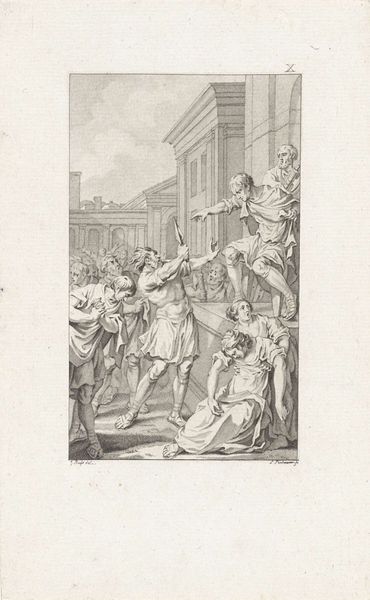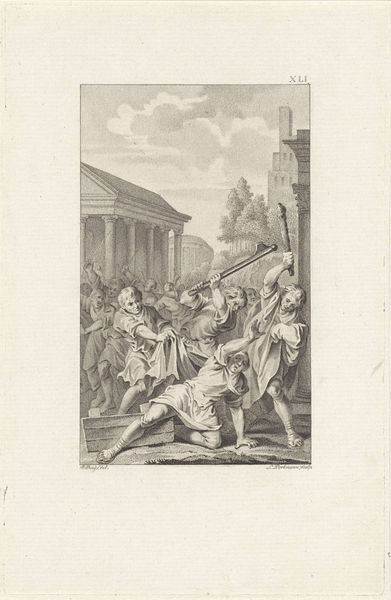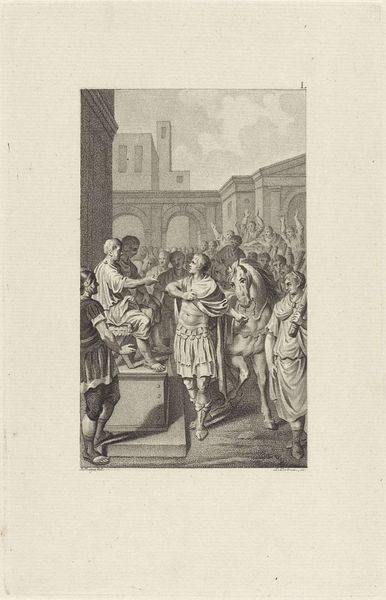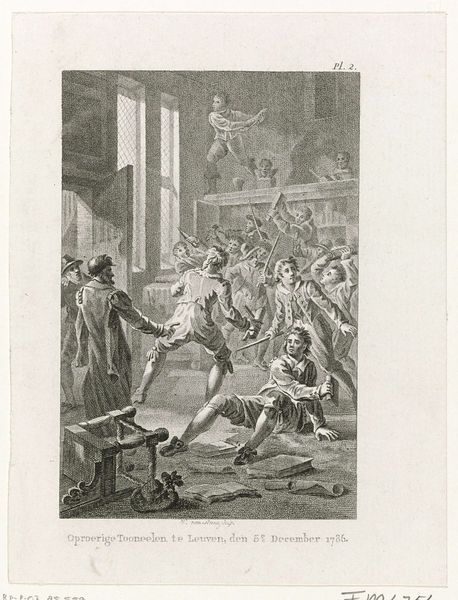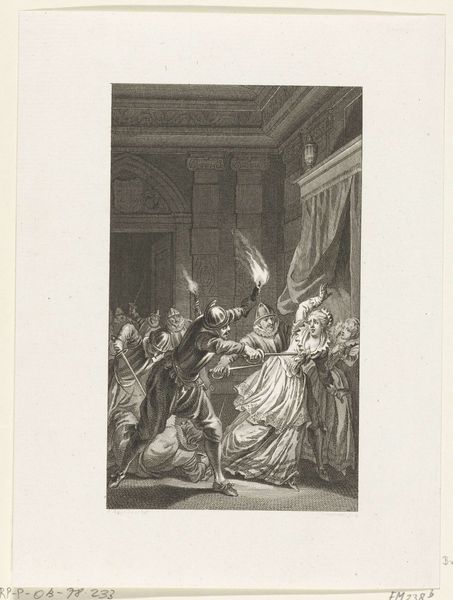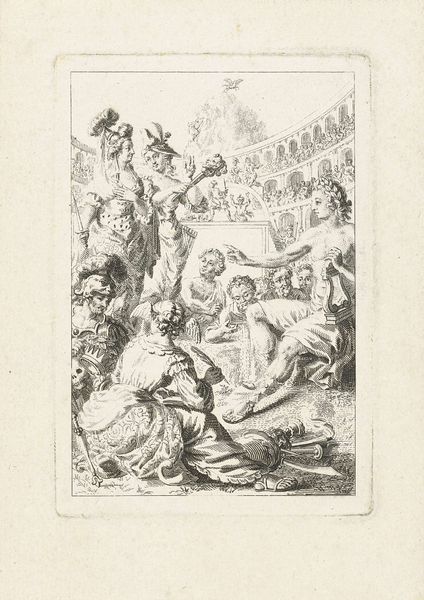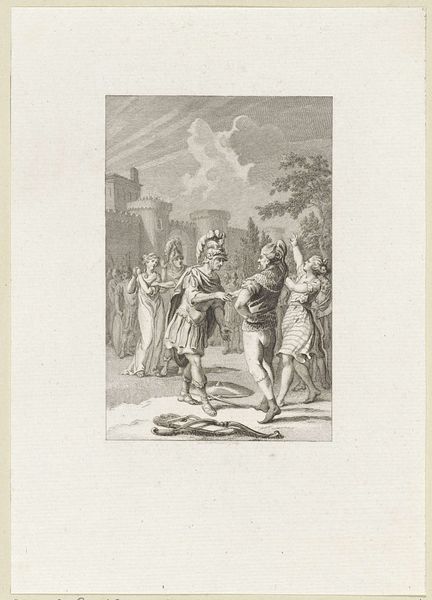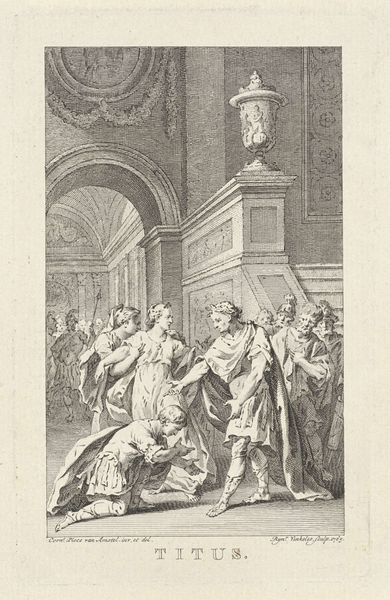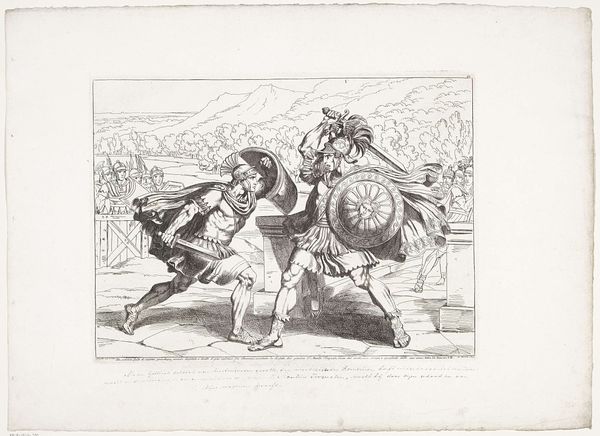
print, engraving
#
neoclacissism
# print
#
figuration
#
line
#
history-painting
#
engraving
Dimensions: height 214 mm, width 141 mm
Copyright: Rijks Museum: Open Domain
Editor: So, here we have Ludwig Gottlieb Portman’s “The Self-Sacrifice of Marcus Curtius” from 1794, an engraving now held at the Rijksmuseum. It depicts a dramatic scene, almost theatrical. What do you see in terms of how it's depicting this moment? Curator: I’m immediately drawn to the material processes at play. As an engraving, it’s a reproduction. Think about the labor involved in creating this image, versus the accessibility it provides to a wider audience than a painting. Editor: That's interesting, I hadn't considered that aspect of mass consumption. So, the print medium democratizes the historical narrative? Curator: Precisely. But also, consider what materials are deemed worthy of this treatment. A classical narrative of heroic self-sacrifice is transformed through mass reproduction into an almost moral lesson available for consumption by many. This contrasts with traditional, unique art objects valued for rarity. The story itself – the sacrifice for the good of Rome - becomes a commodity. Editor: So, the act of making and distributing it almost changes the meaning, from pure heroism to something...else? Curator: Not necessarily changes, but layers it with meaning related to production, distribution, and consumption in society. The lines between fine art, craft and propaganda are blurred here. Was this simply to portray a story or motivate viewers, or were there other messages as to the structure of society and work being offered as well? What kind of skill set does the artist/craftsperson possess? How valued are they in this Neoclassical climate? Editor: That gives me a lot to think about! I came expecting a heroic narrative and leave considering the economic and social aspects instead. Curator: Exactly! Examining art through the lens of materials and production can offer a very different understanding than traditional art history.
Comments
No comments
Be the first to comment and join the conversation on the ultimate creative platform.
